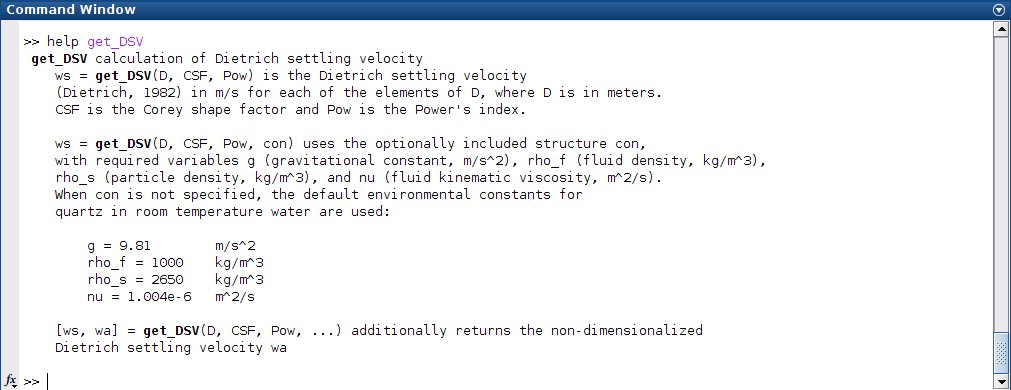Dietrich Settling Velocity Matlab code
Just about two years ago, I published a code for calculating the settling velocity of a particle in water by the Dietrich, 1982 method. I later realized an error in the code that made it produce erroneous estimates. I replaced it with a corrected version of the code written in R, that you can still find on my Github page, but won’t link here. I’ve taken down the old Matlab code and unpublished the original post.
Since the first publication two years ago, I’ve dramatically improved my technical coding skills, and, just as importantly, learned a ton about how to share code with others. A new version of the code can be found linked a the end of this post, but first some philosophy about coding.
As scientists, we want to be able to reliably reproduce results and we have an attraction to openness and access to knowledge, as such, we inevitably share code with one another. I’ve shared a good bit of my code thus far in my career, and I’ve made a few notes about the matter below:
- It is better to organize your code in a way that may not be the most succinct (when speed is not an issue) while improving the readability of the code. In essence, making your code readable to those unfamiliar with it, so they can follow along with your logic.
- Comment everything. It is so easy to get into the groove of writing something and blow through it until it’s finished and then never return to clean up and document the code. When others (or even you) go back to look at it, simple comments explaining what a line does go miles further than a detailed explanation in the documentation.
- Write your code to withstand more that you are currently using it for. What I mean by this is to not write code that works only when you are manipulating this particular dataset or working this particular problem, but code that will work over a broader range of data or can be applied to another problem. Along the same line, use explicit values as sparingly as possible, e.g., if
X = [1:12]is a 12 element vector and you want the middle value, do not useX(6), but instead useX(length(X)/2); or slightly better yet,X(ceil(length(X)/2))to at least not throw an error and give you the first of the two middle rows ifXis an odd number of elements in length.
Anyway, the code is uploaded to my Github and you can find it there. The documentation output on a help get_DSV call in Matlab is produced below.

References
Dietrich, W. E. Settling velocity of natural particles. Water Resources Research 18, 1615–1626 (1982).
This material is based upon work supported by the National Science Foundation Graduate Research Fellowship under Grant No. 1450681. Any opinion, findings, and conclusions or recommendations expressed in this material are those of the authors(s) and do not necessarily reflect the views of the National Science Foundation.
